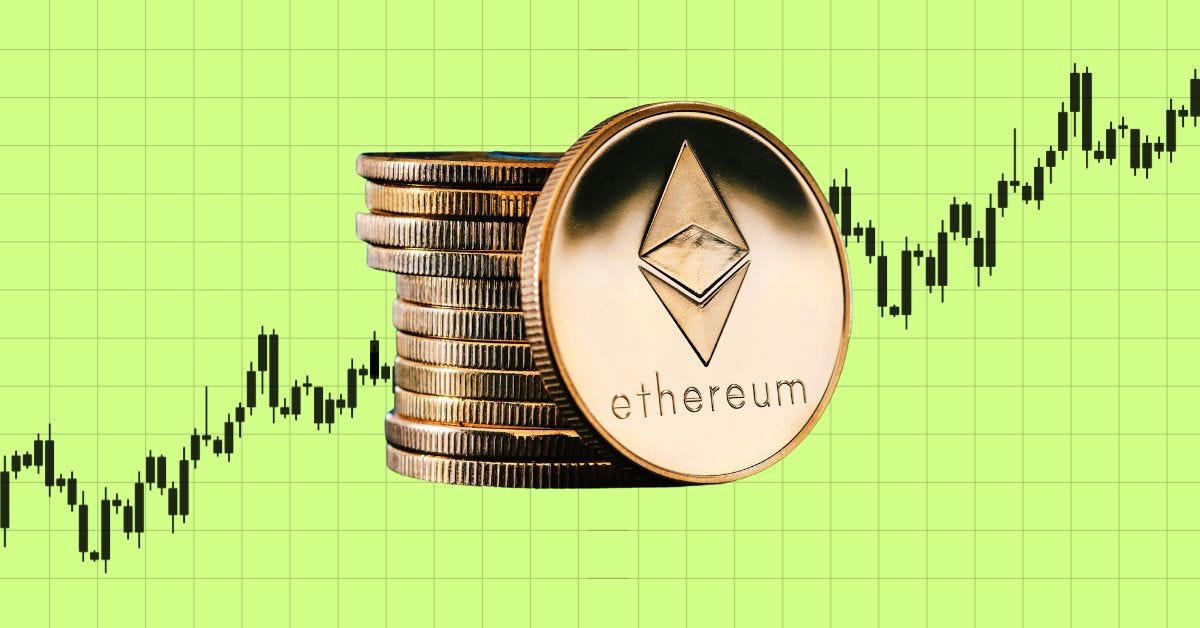Ethereum, often hailed as the most successful altcoin since its launch in 2015, has experienced a dynamic journey in the cryptocurrency world. As of today, the price of Ethereum (ETH) stands at $2,639.63, reflecting a notable increase of 2.40% for the day. For traders, understanding the fluctuations and drivers behind ETH’s price can provide critical insights for strategic decisions.
Recent Performance and Market Position
Ethereum reached a high of $4,088.00 on March 12, 2024, showcasing its significant potential for high returns. However, the crypto market’s volatility is apparent, with ETH touching a 52-week low of $1,520.00 on October 12, 2023. This dramatic swing highlights the inherent risks and opportunities within the crypto trading space.
Despite these fluctuations, Ethereum has firmly established itself with a market capitalization of $317.92 billion, making it the second-largest cryptocurrency by market cap, trailing only behind Bitcoin. This dominance, alongside Bitcoin, represents a combined 71% of the entire cryptocurrency market. Ethereum’s market cap is comparable to major blue-chip stocks like Coca-Cola and Merck, underscoring its substantial impact on global financial markets.
Key Factors Influencing Ethereum’s Price
Ethereum’s price dynamics are largely driven by supply and demand, with no inherent earnings or revenue to directly impact its valuation. Its programmable blockchain, which supports smart contracts, adds significant utility and attractiveness. Ethereum facilitates various decentralized applications (dApps), including decentralized finance (DeFi), gaming, and NFTs, which contribute to its broad appeal.
However, Ethereum has not been immune to market corrections. The price peaked at $4,891.70 on November 16, 2021, only to dip below $900 during the 2022 crypto winter. This volatility is part and parcel of the cryptocurrency market, where external factors such as regulatory developments and macroeconomic conditions can cause substantial price swings.
The Current Market Landscape
In 2024, Ethereum has seen a resurgence, driven by positive developments such as the approval of several Bitcoin spot ETFs and the launch of Ether spot ETFs in July. Despite a recent sell-off in early August that saw prices plunge from over $3,000 to under $2,500, Ethereum’s current price of $2,639.63 suggests a recovery phase in progress.
For traders, this price volatility presents both challenges and opportunities. Monitoring Ethereum’s market cap, alongside broader trends and ETF performances, can offer valuable insights into potential price movements and investment strategies.
Buying and Storing Ethereum
For those looking to buy Ethereum, popular exchanges like Binance, Coinbase, and Kraken offer convenient access. Ethereum is also available through payment apps like Venmo and PayPal, and can be purchased via physical crypto ATMs.
When it comes to storage, choosing the right wallet is crucial. Crypto wallets come in various forms, including hardware wallets for enhanced security and software wallets for convenience. Understanding the difference between hot and cold wallets can help in safeguarding your Ethereum holdings effectively.
Ethereum ETFs and Future Outlook
The introduction of Ethereum futures ETFs, such as the Bitwise Ethereum Strategy ETF and VanEck Ethereum Strategy ETF, provides alternative investment avenues. Ether spot ETFs, including those from BlackRock and Fidelity, mark a significant step forward in the evolution of crypto investment products.
In conclusion, for crypto traders, keeping abreast of Ethereum’s price movements, market capitalization, and the broader economic factors affecting the crypto space is essential. By staying informed and strategic, traders can navigate the complexities of Ethereum and leverage its potential in a rapidly evolving market.



